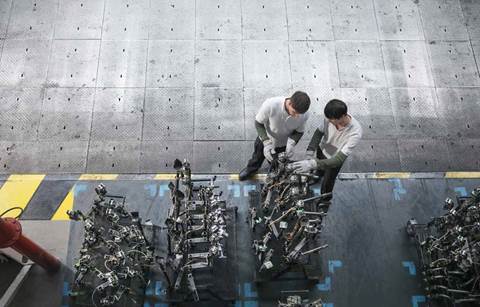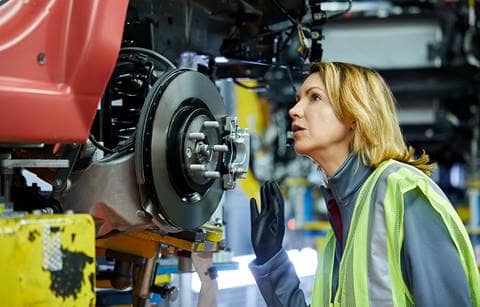Over the past seven months, COVID-19-related business closures and stay-at-home orders significantly altered mobility patterns, raising questions about whether the changes in trip frequency, purpose, and mode of transportation will become permanent. This include questions such as:
- Personal travel: Is the daily commute dead? Some estimates say up to 25% of the workforce can work from home.
- Delivery miles: Will growth in last mile delivery, home delivery, and e-commerce (including long haul) continue? How much will this increase be offset by a commensurate decline in warehouse to retail delivery?
- Changes in traffic patterns: A reduction in overall traffic has eased congestion and increased overall traffic speed leading to reduced journey times. Will this negatively impact the value proposition for shared vehicles?
- Longer runway for private vehicles: Does aversion to mass public transport mean we’ll maintain our private vehicles longer?
- Potential longer-term implications: With less need for travel, will we see a decrease in vehicle utilization, fewer miles travelled, increase in vehicle life, decreased replacement time frames, and reduction in number of vehicles per household?
The answers to most of these questions are unknown at this time, but one thing is clear: The post-pandemic automotive industry is going to look very different. OEMs and suppliers need a dual focus on ensuring short-term survival — rebuilding and maintaining current production — while simultaneously planning a transition to new, advanced technologies for mobility.
Short-term trends
Suppliers are currently seeing a strong rebound in volumes during the second half of 2020. Demand for vehicles is high — close to 2019 levels — and inventories on dealer lots are low. The used vehicle market is strong. This should be good news for suppliers, but it’s a mixed blessing for many. Why?
- Labor shortages: In normal times, increased demand is good news, but in the era of COVID-19, suppliers are struggling because they can’t find enough people to keep production plants running.
- Pull ahead orders: OEMs have placed significant pull ahead orders for parts to hedge against the impact of another unplanned shutdown. This leaves suppliers scrambling to meet the demand today while worrying about a future slowdown when pull ahead ordering is normalized, along with the fear of being stuck with excess material that can’t be used.
- Demand: Suppliers are nervous about how demand for their products and services will change. New models are delayed and, when they come, changes are likely — particularly in interiors, surfaces, and materials. This could force many suppliers to change products and shift production plans.
- Investment timing: The pandemic has also had an impact on investment timing. Lower revenue in recent quarters has curtailed the availability of capital to invest in new technology, forcing many suppliers to push capital budgets out into the future.
Impact on mega mobility trends
Prior to the pandemic, connected, autonomous, shared, and electrified (CASE) technologies for mobility were gaining traction as the industry made steady progress away from traditional products such as the internal combustion engine. While these long-term growth trends are expected to continue, some areas may increase while others decrease, depending on the level of permanent altered mobility behaviors. Expected changes include:
- Electric vehicles (EVs): The move to EVs should see minimal impact from the pandemic and is even likely to see stronger growth. The recent California executive order requiring all new passenger cars and trucks sold in the state to be emissions-free by 2035 is expected to have many other states follow suit, prompting OEMs to accelerate efforts in the EV space.
- Autonomous vehicles (AVs): AV deployment is still on track to continue or increase post-pandemic. The demand for robo-taxis is expected to be high, and the ability to use AVs for noncommute purposes such as e-commerce and “last-mile” deliveries is expected to be strong. The current economic slowdown has reduced the availability of capital to fund AV investment, but the delay is expected to be short-term.
- Artificial intelligence (AI): AI development work has continued through the pandemic, amassing data and generating knowledge that will be used by the auto industry to develop better software for AVs, EVs, and other new technologies.
- Connectivity: The demand for data and connectivity capabilities in vehicles is expected to increase. Current AVs are focused on an individual automobile’s ability to sense when there’s an object or person in front of it and operate in that environment. Adding the ability for the vehicle to connect with the outside world and combine data with AI algorithms will soon make it possible to modify the behavior of AVs well before they encounter a problem. This increased connectivity and use of data is expected to drive a big change in AVs, and this area could potentially boom as the technology sector brings investment dollars into the space.
- Shared: Shared transportation is expected to see the most complicated, but significant impact from COVID-19 depending on the type of transportation. Mass transit such as bus, rail, and air transportation has already seen major impact, and significant improvement in volumes aren’t expected until a COVID-19 vaccine is widely available. The pandemic also changes the potential mix of types and sizes of shared transportation we’ll see going forward. Private pods may take on more significance versus sharing a ride with potentially a half dozen or more people in close proximity. The type and size of the vehicle will have interior design implications that will impact the demand for various components.
- Micro transit: Personal transportation in the active mobility space (such as cycling and walking) will continue to see strong growth, particularly in dense urban areas. Micro personal transportation is expected to fit well alongside the staging of AV technologies because of the lower speeds involved, and the protection provided by personalized transport.
Opportunities
In the short term, OEMs and suppliers are squarely focused on bringing back production after the COVID-19-related disruptions. But looking forward, the next wave of disruptive change in mobility will likely emerge through EVs and other CASE technologies. OEMs and suppliers need to quickly figure out what their product strategy is going to be and if they’re planning to be active in the EV space, they’ll need to accelerate their transition.
Areas of opportunity include:
- Next-gen components: Design and manufacture of structural and electric components for vehicle propulsion and innovation in the area of interiors, surfaces, and materials.
- Ecosystem technologies: Building capabilities around the “environment of vehicles.” AI, AVs, and sharing will naturally follow the EV because self-driving vehicles operate very efficiently in that ecosystem. There’s currently no overarching infrastructure to enable vehicles to communicate with each other, and it’s a wide-open space in terms of how data will get accumulated and used.
- Mobility services: There’s significant opportunity for mobility providers in areas such as temperature testing, cleaning, and sanitation of shared and private vehicles; greater integration of biometric and health-related technology in vehicles; and integration and greater sharing of track and trace technology in mobility applications.
- Relocating production: The shift to new technology and COVID-19-related disruptions is driving new decision criteria around the supply chain and locating production closer to home where the product is going to be used. This is expected to drive new opportunities domestically as new production is added.
Where will COVID-19 leave your business?
Fallout from the pandemic combined with the ongoing shift from the world of the internal combustion engine to EVs will mean some OEMs and suppliers won’t survive in their current form. This is expected to drive a wave of partnering and consolidation. Since the future of mobility is centered around CASE technologies, it’s likely that significant new investment will come from the technology sector, and tech companies may emerge as the leaders on the new frontiers of mobility.
It’s not a time to be complacent
As the industry and your competitors shift and adapt, would you rather be forced to react or drive change and thrive? Now’s the time to strategically plan your company’s future and identify the products and technologies that will enable you to leapfrog your competition. Questions to ask include:
- What are your core products or manufacturing capabilities? Is your business tied to the traditional internal combustion engine?
- Do you clearly understand what your products are doing right now and how they’ll be impacted long term?
- Do you provide surfaces and materials that people are no longer interested in touching?
- Are your products created for vehicles people are no longer interested in buying or will become obsolete in the future?
Start planning by designing possible scenarios, similar to a gaming approach. Determine what new products you’ll need to develop and the capabilities you’ll need to make them. This could drive a decision to use your current financial strength acquire additional capabilities. If you’re currently in a good position, this might be the time to add some risk and take advantage of market weakness to acquire a competitor. Just as importantly, consider whether you should stop doing something.
There are a lot of short-term uncertainties, but longer term, the direction for the auto industry is positive. For help planning your strategy in the changing world of mobility, give us a call.





